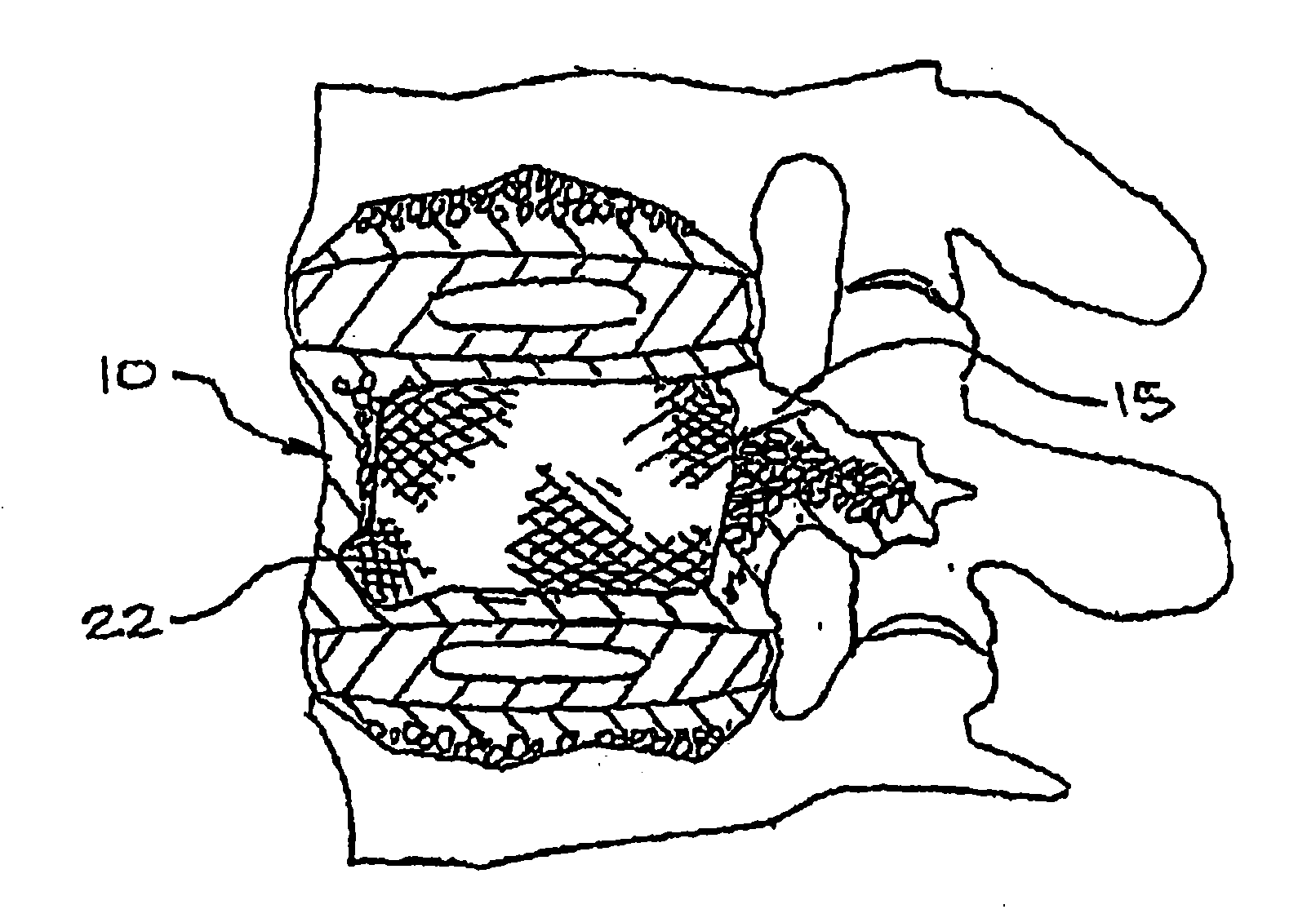Expandable porous mesh bag device and methods of use for reduction, filling, fixation and supporting of bone
a mesh bag and expandable technology, applied in the field of expandable porous mesh bag devices and methods of use for reducing, filling, fixing and supporting bone, can solve the problems of not specifically designed to remove disc tissue, leave behind tissue fragments, and inefficient tools, so as to avoid puncture fear and avoid the effect of slipping
- Summary
- Abstract
- Description
- Claims
- Application Information
AI Technical Summary
Benefits of technology
Problems solved by technology
Method used
Image
Examples
Embodiment Construction
[0036]In the following detailed description, similar reference numerals are used to depict like elements in the various figures.
[0037]FIG. 1 shows a typical vertebra 10 having compression fractures 12 that is in need of repair. As indicated above the damaged portion of the vertebra 10 may be reamed out, compacted, or otherwise repaired. For example, FIG. 2 shows a reamer 14 entering the vertebra 10 anteriorly to make an opening 15 and cavity 16. Alternatively, multiple cavities 16 may be formed such as is shown in FIG. 3.
[0038]As previously mentioned, the damaged portion of the vertebra 10 may be compacted in addition to or instead of being reamed out. In FIG. 4, a delivery tube or catheter 20 is seen in the process of delivering an expandable fabric bag 22 into the vertebra 10 or into a cavity 16 present therein. As indicated, the cavity 16 may have been created through reaming, compaction by the bag 22 or other device, or by other means. Once the bag 22 is positioned within the ve...
PUM
 Login to View More
Login to View More Abstract
Description
Claims
Application Information
 Login to View More
Login to View More - R&D
- Intellectual Property
- Life Sciences
- Materials
- Tech Scout
- Unparalleled Data Quality
- Higher Quality Content
- 60% Fewer Hallucinations
Browse by: Latest US Patents, China's latest patents, Technical Efficacy Thesaurus, Application Domain, Technology Topic, Popular Technical Reports.
© 2025 PatSnap. All rights reserved.Legal|Privacy policy|Modern Slavery Act Transparency Statement|Sitemap|About US| Contact US: help@patsnap.com



